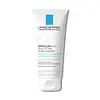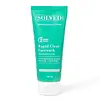What's inside
What's inside
 Key Ingredients
Key Ingredients

 Benefits
Benefits

 Concerns
Concerns

 Ingredients Side-by-side
Ingredients Side-by-side

Benzoyl Peroxide 4%
Water
Skin ConditioningGlycerin
HumectantPropylene Glycol
HumectantCocamidopropyl Hydroxysultaine
CleansingSodium C14-16 Olefin Sulfonate
CleansingXanthan Gum
EmulsifyingPotassium Hydroxide
BufferingSodium Chloride
MaskingSodium Citrate
BufferingNiacinamide
SmoothingSodium Hyaluronate
HumectantCapryloyl Salicylic Acid
ExfoliatingPropanediol
SolventDiethylhexyl Sodium Sulfosuccinate
CleansingCarbomer
Emulsion StabilisingBenzoic Acid
MaskingPentylene Glycol
Skin ConditioningSodium Hydroxide
BufferingGlycolic Acid
BufferingTetrasodium EDTA
Trisodium Ethylenediamine Disuccinate
Citric Acid
BufferingBenzoyl Peroxide 4%, Water, Glycerin, Propylene Glycol, Cocamidopropyl Hydroxysultaine, Sodium C14-16 Olefin Sulfonate, Xanthan Gum, Potassium Hydroxide, Sodium Chloride, Sodium Citrate, Niacinamide, Sodium Hyaluronate, Capryloyl Salicylic Acid, Propanediol, Diethylhexyl Sodium Sulfosuccinate, Carbomer, Benzoic Acid, Pentylene Glycol, Sodium Hydroxide, Glycolic Acid, Tetrasodium EDTA, Trisodium Ethylenediamine Disuccinate, Citric Acid
Benzoyl Peroxide
Glycolic Acid
BufferingCeramide AP
Skin ConditioningHyaluronic Acid
HumectantGlycerin
HumectantGlycyrrhiza Glabra Root Extract
BleachingAllantoin
Skin ConditioningPanthenol
Skin ConditioningWater
Skin ConditioningSodium Lauroyl Sarcosinate
CleansingDecyl Glucoside
CleansingPropanediol
SolventAcrylates/C10-30 Alkyl Acrylate Crosspolymer
Emulsion StabilisingPhenoxyethanol
PreservativeEthylhexylglycerin
Skin ConditioningSodium Hydroxide
BufferingPhytosphingosine
Skin ConditioningCholesterol
EmollientDisodium EDTA
Sodium Lauroyl Lactylate
EmulsifyingCarbomer
Emulsion StabilisingXanthan Gum
EmulsifyingBenzoyl Peroxide, Glycolic Acid, Ceramide AP, Hyaluronic Acid, Glycerin, Glycyrrhiza Glabra Root Extract, Allantoin, Panthenol, Water, Sodium Lauroyl Sarcosinate, Decyl Glucoside, Propanediol, Acrylates/C10-30 Alkyl Acrylate Crosspolymer, Phenoxyethanol, Ethylhexylglycerin, Sodium Hydroxide, Phytosphingosine, Cholesterol, Disodium EDTA, Sodium Lauroyl Lactylate, Carbomer, Xanthan Gum
 Reviews
Reviews

Ingredients Explained
These ingredients are found in both products.
Ingredients higher up in an ingredient list are typically present in a larger amount.
Benzoyl Peroxide is famous for fighting acne. This is because it does a variety of tasks on the skin: it helps reduce excess oil, kill bacteria, and clear out dead skin cells. In other words, it is effective at unclogging pores.
These properties make it great at fighting different types of acne, including cystic and inflammatory types of acne.
When targeting the bacteria in your pores, Benzoyl Peroxide has been shown to kill the bacteria without causing sensitivity. It also helps keep your skin's natural bacteria and biome balanced. Having a healthy biome protects your skin from external harmful factors.
Once Benzoyl Peroxide is absorbed into the skin, our bodies turn it into benzoic acid and quickly exits in urine.
When using Benzoyl Peroxide, it may be irritating for some people due to a variety of reasons, such as a broken skin barrier or just an allergic reaction. We recommend speaking with a professional about using this ingredient if you have concerns.
Learn more about Benzoyl PeroxideCarbomer is a polymer of acrylic acid. Its main role is to create a gel consistency.
A high amount of carbomer can cause pilling or balling up of products. Don't worry, most products contain 1% or less of carbomer.
Glycerin is already naturally found in your skin. It helps moisturize and protect your skin.
A study from 2016 found glycerin to be more effective as a humectant than AHAs and hyaluronic acid.
As a humectant, it helps the skin stay hydrated by pulling moisture to your skin. The low molecular weight of glycerin allows it to pull moisture into the deeper layers of your skin.
Hydrated skin improves your skin barrier; Your skin barrier helps protect against irritants and bacteria.
Glycerin has also been found to have antimicrobial and antiviral properties. Due to these properties, glycerin is often used in wound and burn treatments.
In cosmetics, glycerin is usually derived from plants such as soybean or palm. However, it can also be sourced from animals, such as tallow or animal fat.
This ingredient is organic, colorless, odorless, and non-toxic.
Glycerin is the name for this ingredient in American English. British English uses Glycerol/Glycerine.
Learn more about GlycerinGlycolic Acid is arguably the most famous alpha hydroxy acid (AHA) with tons of research backing its benefits.
It is found naturally in sugar cane but the form used in skincare is usually synthetic for purity and stability.
Glycolic acid removes the top layer of dead skin cells to allow newer and fresher ones to emerge.
AHAs work by breaking down the structural “glue” that holds old skin cells in place. When that buildup is gone, your skin can renew itself more efficiently.
Research also shows glycolic acid stimulates collagen production, helping to firm and thicken the skin over time. This is one of its biggest advantages over other AHAs.
Overall, glycolic acid helps with:
Fun fact: Glycolic acid boosts skin hydration by helping it produce molecules that increase hyaluronic acid naturally.
To work best, glycolic acid products should have a pH between 3-4 (that’s where exfoliation is most effective but still gentle on skin).
The pH and concentration of a product are key to its effectiveness:
It is normal to feel a slight stinging sensation when using glycolic acid. This usually fades as your skin adjusts.
Because glycolic acid has the smallest molecular size in the AHA family, it can penetrate deeper, which enhances its effectiveness but also makes it more likely to irritate sensitive skin.
If your skin is very sensitive or prone to rosacea, glycolic acid may be too strong; in that case, try milder options like lactic acid or a PHA instead.
Recent studies suggest glycolic acid might even help protect against UV damage. But don’t skip sunscreen! Freshly exfoliated skin is more sensitive to the sun.
Glycolic acid is a skincare superstar. It smooths, brightens, hydrates, and firms the skin. Unless you’re highly sensitive, it’s well worth adding to your routine.
Read more about some other popular AHA's here:
Learn more about Glycolic AcidPropanediol is an all-star ingredient. It softens, hydrates, and smooths the skin.
It’s often used to:
Propanediol is not likely to cause sensitivity and considered safe to use. It is derived from corn or petroleum with a clear color and no scent.
Learn more about PropanediolSodium Hydroxide is also known as lye or caustic soda. It is used to adjust the pH of products; many ingredients require a specific pH to be effective.
In small amounts, sodium hydroxide is considered safe to use. However, large amounts may cause chemical burns due to its high alkaline.
Your skin has a natural pH and acid mantle. This acid mantle helps prevent harmful bacteria from breaking through. The acid mantle also helps keep your skin hydrated.
"Alkaline" refers to a high pH level. A low pH level would be considered acidic.
Learn more about Sodium HydroxideWater. It's the most common cosmetic ingredient of all. You'll usually see it at the top of ingredient lists, meaning that it makes up the largest part of the product.
So why is it so popular? Water most often acts as a solvent - this means that it helps dissolve other ingredients into the formulation.
You'll also recognize water as that liquid we all need to stay alive. If you see this, drink a glass of water. Stay hydrated!
Learn more about WaterXanthan gum is used as a stabilizer and thickener within cosmetic products. It helps give products a sticky, thick feeling - preventing them from being too runny.
On the technical side of things, xanthan gum is a polysaccharide - a combination consisting of multiple sugar molecules bonded together.
Xanthan gum is a pretty common and great ingredient. It is a natural, non-toxic, non-irritating ingredient that is also commonly used in food products.
Learn more about Xanthan Gum